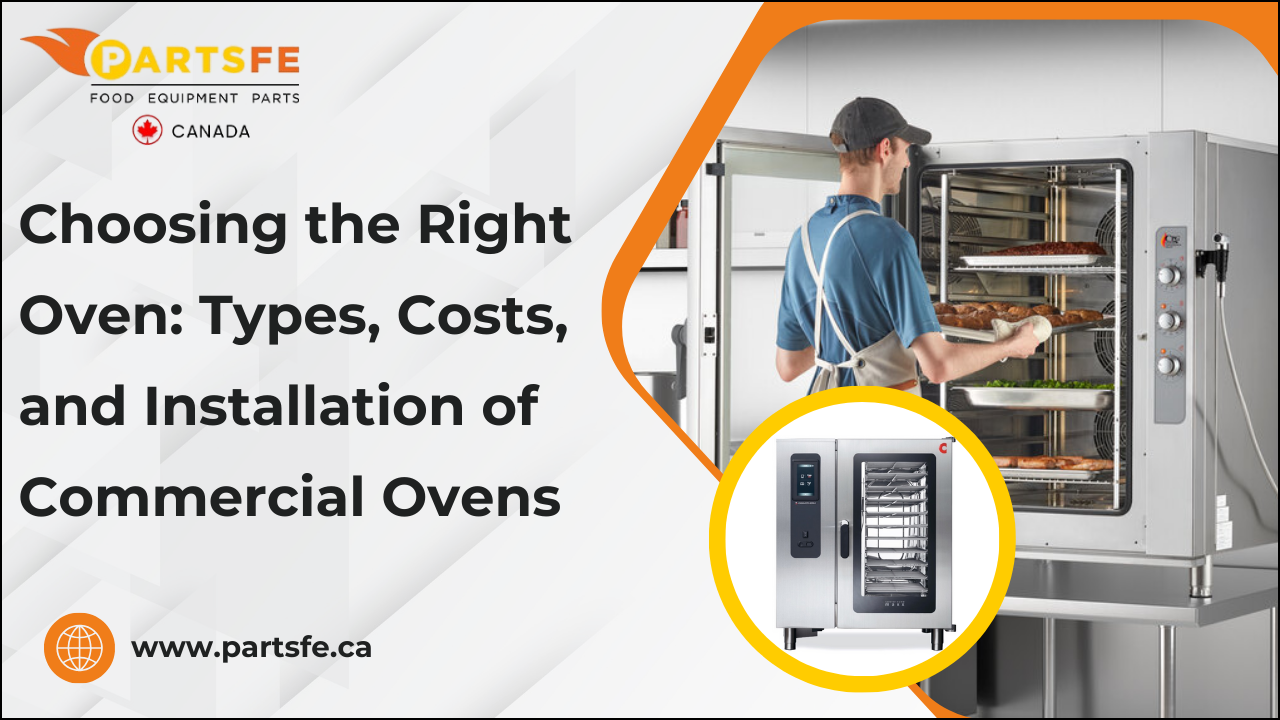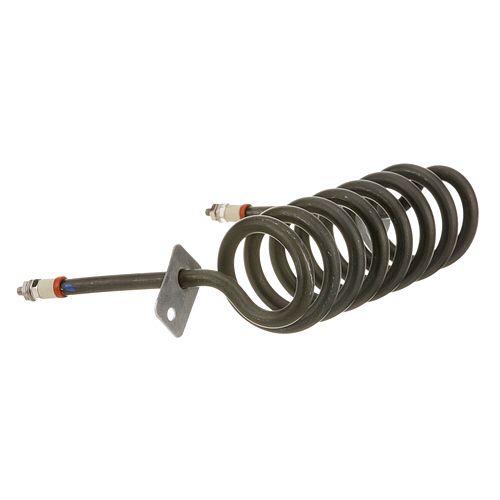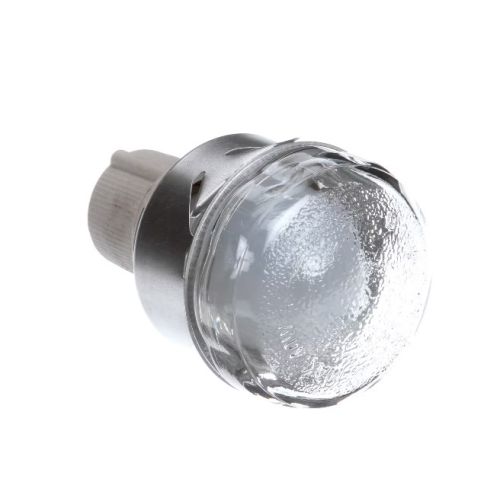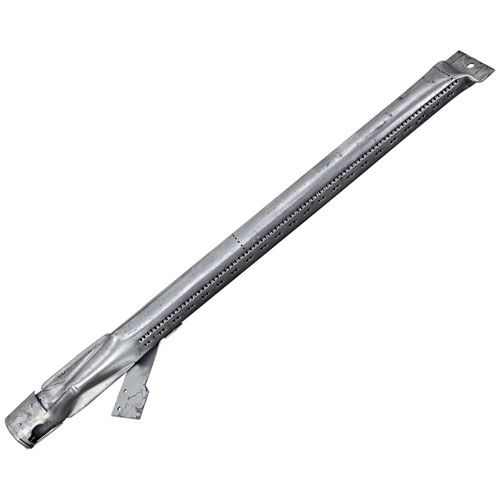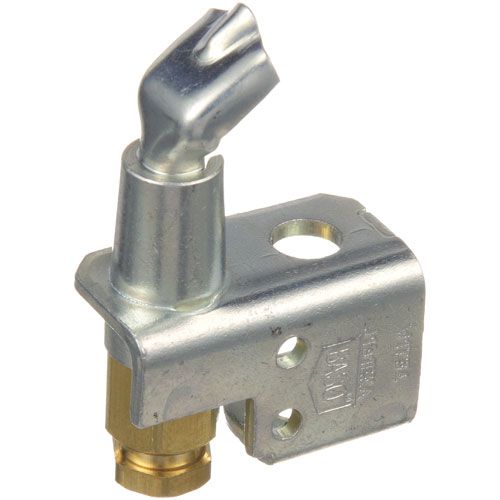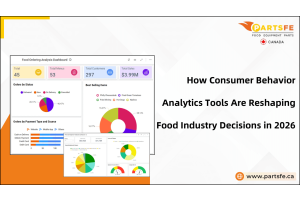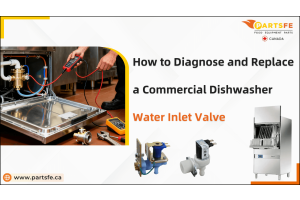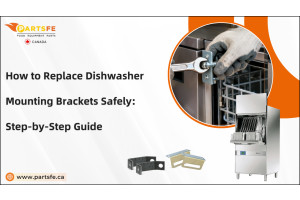Choosing the Right Oven: Types, Costs, and Installation of Commercial Ovens
Commercial ovens tailored for restaurant use are designed to handle high-volume cooking in professional settings like restaurants, cafes, and bakeries. They are engineered to withstand continuous use and efficiently cook large quantities of food. These ovens come in various types, such as convection ovens, deck ovens, and conveyor ovens, each offering unique features and advantages. For food service businesses, a commercial oven is indispensable, significantly boosting productivity, enhancing food quality, and streamlining operations. However, selecting the right commercial oven can be daunting due to various considerations like oven type, cost, and installation process. This comprehensive guide to purchasing a commercial oven for restaurant covers everything from the different oven parts and types available to cost considerations and installation procedures.
Types of commercial ovens
Commercial ovens come in various types, each suited to specific cooking techniques and kitchen demands. Whether you run a bakery, pizzeria, or full-scale restaurant, choosing the right oven can enhance efficiency and food quality. Below are the most common types of commercial ovens and their key features:
Convection Ovens
Convection ovens use internal fans to circulate hot air, ensuring even cooking temperatures throughout the oven cavity. They are ideal for baking pastries, roasting meats, and cooking multiple trays at once with consistent results.
Deck Ovens
Deck ovens feature stone or ceramic decks that retain heat, making them perfect for baking bread, pizza, and other artisanal items. Each deck operates independently, allowing different temperatures for various products simultaneously.
Conveyor Ovens
Designed for high-volume cooking, conveyor ovens use a moving belt to carry food through a heated chamber. Commonly used in pizza shops and fast-food establishments, they deliver consistent results quickly and efficiently.
Combi Ovens
Combi ovens combine steam and convection cooking in one unit, offering versatility and precision. They are used in fine dining and institutional kitchens to cook meats, vegetables, and baked goods with moisture control and even heat.
Microwave and High-Speed Ovens
These ovens are used for rapid heating or finishing of pre-cooked items. High-speed ovens combine microwave, convection, and sometimes infrared technology, making them ideal for quick-service restaurants.
What are the benefits of restaurant ovens?
The advantages of a commercial oven for restaurant are numerous and can significantly impact the efficiency and quality of food preparation in a commercial kitchen. Here are some key benefits:
-
High capacity: Restaurant ovens are designed to handle large volumes of food, allowing for the efficient cooking of multiple dishes simultaneously, which is imperative in a busy restaurant environment.
-
Consistent performance: These ovens are engineered to deliver consistent and even heat distribution, ensuring that food is cooked uniformly, leading to high-quality and reliable results.
-
Versatility: Many restaurant ovens come with various cooking modes, allowing chefs to bake, roast, broil, and perform other cooking techniques in a single unit, thereby enhancing menu flexibility.
-
Durability and longevity: Restaurant ovens are built to withstand the demands of commercial kitchen operations, offering robust construction and longevity even with heavy use.
-
Efficiency: These ovens are optimized for efficiency, reducing cooking times and energy costs while maintaining optimal cooking standards.
-
Customization options: Some restaurant ovens offer customization features, allowing chefs to tailor cooking settings to specific recipes and culinary preferences.
How to select a commercial oven for my restaurant?
Choosing the right commercial oven for restaurant is a critical decision that directly impacts kitchen efficiency and food quality. Here are some key factors to consider when selecting a commercial oven:
-
Cooking requirements: Assess your menu and production needs. Different cuisines and food items require specific types of ovens. For example, a pizzeria would benefit from a high-temperature pizza oven, while a bakery might require a convection oven with multiple racks for baking.
-
Cooking speed: Evaluate the turnaround time for your dishes. Some ovens are faster than others. Rotisserie ovens can cook meats relatively quickly, whereas slow cook-and-hold cabinets suit longer cooking times.
-
Ease of use: Consider the skill level of your kitchen staff. Opt for ovens that are user-friendly to minimize training time and potential errors during operation.
-
Size and capacity: Measure your kitchen space accurately. Choose an oven that fits your kitchen layout and workflow without overcrowding. Keep in mind both the external dimensions and internal cooking capacity.
-
Utilities: Determine the most suitable power source for your oven—gas, electric, or steam. Consider existing infrastructure and installation costs when making this decision.
-
Ventilation: Ensure your kitchen has adequate ventilation to accommodate the oven's requirements. Proper ventilation is crucial for safety and efficient operation.
-
Cost and budget: Set a realistic budget that includes the cost of the oven, installation, and potential maintenance. Balance cost considerations with the need for durability and performance.
-
Brand reputation and warranty: Research reputable brands known for quality and reliability. Check warranty terms and after-sales support to ensure long-term satisfaction.
-
Energy efficiency: Choose an oven with energy-saving features to minimize utility costs over time.
-
Reviews and recommendations: Seek feedback from other restaurant owners or chefs regarding their experiences with specific oven models.
How much does a commercial oven cost?
Commercial kitchen ovens vary widely in cost due to factors like size, brand, and features. The price of an oven can range significantly based on these variables. Here's a breakdown to help estimate commercial oven cost:
|
Commercial kitchen oven types |
Cost ranges |
|
Gas ovens |
$400 - $1,500 |
|
Commercial electric ovens |
$500 - $2,000 |
|
Dual fuel ovens |
$1,500 - $6,000 |
|
Convection ovens |
$600 - $2,000 |
|
Size of ovens |
Cost ranges |
|
Small ovens (18-24 inches wide) |
$400 - $1000 |
|
Medium ovens (24-30 inches wide) |
$500 - $2000 |
|
Large ovens (30-36 inches wide) |
$1000 - $6000 |
|
Features of ovens and additional costs |
Cost ranges |
|
Self-cleaning function |
$600 - $2000 |
|
Digital controls |
Increases cost by $500 - $1,500 |
|
Extra racks |
Typically $50 - $200 |
|
Built-in microwaves |
Additional $300 - $1,000 depending on brand |
What are the finest commercial oven brands for 2025?
Selecting a reliable and top-quality brand is paramount when considering commercial ovens for any food service operation. In 2025, several brands will stand out for their exceptional performance, durability, and value for money.
-
Vulcan, a pioneer with over 150 years of experience in commercial kitchen equipment, is celebrated for its innovative and enduring products tailored to the food service industry's unique demands. Notably, Vulcan's commercial ovens are praised for their energy efficiency and long-lasting build.
-
Southbend boasts a diverse lineup of ovens, ranges, and related equipment known for outstanding performance, durability, and reliability. Precision engineering and meticulous design make Southbend's commercial ovens a favored choice among restaurants, cafes, and similar establishments.
-
Hobart is renowned for its cutting-edge and dependable products crafted specifically for the food service sector. Hobart's commercial ovens are highly regarded for their exceptional performance, aligning perfectly with industry needs.
-
Imperial, with a reputable 60-year legacy, is a trusted brand delivering high-quality kitchen equipment tailored to the rigorous demands of food service. Their commercial ovens stand out for their durability and performance.
-
Blodgett, with over 150 years of expertise, is respected for its user-friendly and high-performance commercial kitchen equipment, including ovens renowned for their efficiency.
-
Garland, a well-established brand with over 140 years of history, is celebrated for its exceptional performance, energy efficiency, and durability in commercial ovens, making it a preferred choice for discerning food service professionals.
Most popular oven replacement parts
Commercial ovens are essential for consistent and reliable food preparation, but they require maintenance and occasional replacement of parts due to wear and tear. Let's explore some common oven replacement components used in commercial settings:
|
Component |
Function |
Potential issues |
|
Thermostats |
Regulate oven temperature by controlling heating elements. |
Inaccurate temperature leads to uneven cooking. |
|
Door gaskets |
Seal around the oven door to prevent heat loss. |
Worn or damaged gaskets increase energy costs. |
|
Generate heat inside the oven for cooking. |
Worn-out elements result in uneven heating. |
|
|
Igniters |
Light gas burners in gas ovens. |
Worn igniters lead to difficulty lighting the oven. |
|
Thermocouples |
Safety devices that detect gas flame status and shut off the gas supply if extinguished. |
Faulty thermocouples may shut off gas unnecessarily. |
|
Motors and fans |
Circulate air for even heat distribution. |
Damaged motors or fans affect |
How do you install an industrial oven?
To successful commercial oven installation, careful planning and adherence to safety guidelines are crucial. Follow these steps for a smooth installation process:
-
Choose an appropriate place: Select a place that meets local building and safety requirements. Ensure that there is enough room around the oven for ventilation and maintenance.
-
Check the power supply and ventilation: Check that the electrical supply meets the oven's specifications and that there is adequate ventilation to handle heat and exhaust. Consult a skilled electrician or HVAC specialist if necessary.
-
Build the oven: Follow the manufacturer's instructions to build the oven properly. Many personnel may be required at this stage to handle heavy components properly.
-
Position and fasten the oven: Place the oven in its intended place and fasten it to the floor or wall according to the installation instructions. Use the proper hardware to ensure stability and safety.
-
Connect utilities: Follow safety guidelines when connecting the oven to the power supply and ventilation system. Double-check all connections to prevent electrical risks.
-
Test the oven: Before using the oven, conduct a complete test to ensure it works properly. Check for leaks, odd noises, and malfunctions.
-
Staff training: Provide comprehensive instructions to employees on how to use the oven safely and efficiently.
When choosing a commercial oven, it's critical to consider numerous variables. Understanding the various types of ovens mentioned in this article will allow you to make an informed decision that is appropriate for your business needs and budget. It is also critical to invest in a high-quality oven that is both energy-efficient and durable, resulting in long-term cost benefits. Additionally, appropriate oven installation is required for best performance and safety.
FAQs
How long does chicken breast take to cook in the oven?
The cooking time for chicken breast in the oven varies according to the size and thickness of the chicken. In general, a 4-ounce chicken breast should be cooked at 350°F for 25-30 minutes and an 8-ounce chicken breast for 35-40 minutes.
How do I bake a potato in the oven?
To bake a potato, preheat the oven to 400°F. Wash the potato and make a few holes in it with a fork. Rub the potato with oil and season with salt. Place the potato on a baking pan and bake for 45-60 minutes, or until cooked.
Which commercial oven is best for baking bread?
Deck ovens are the greatest type of commercial oven for baking bread.
What are the top commercial rotisserie oven options?
The greatest commercial rotisserie ovens are gas rotisserie ovens and electric rotisserie ovens.

